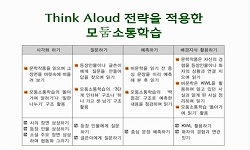The purpose of this study is to identify the aspects in which the principle of politeness is realized in actual conversation and to present a plan for teaching the principle of politeness in Korean language education based on these findings. To achiev...
http://chineseinput.net/에서 pinyin(병음)방식으로 중국어를 변환할 수 있습니다.
변환된 중국어를 복사하여 사용하시면 됩니다.
- 中文 을 입력하시려면 zhongwen을 입력하시고 space를누르시면됩니다.
- 北京 을 입력하시려면 beijing을 입력하시고 space를 누르시면 됩니다.

대화이동 연속체 원형을 활용한 ‘공손성 원리’의 화법 교육 방안 -예능 프로그램 <효리네 민박> 대화 분석을 중심으로- = eaching Approach for the Principle of Politeness Using the Dialogue Movement Continuum Prototype -Analysis of Conversations in the Entertainment Program <Hyori’s Homestay>-
한글로보기https://www.riss.kr/link?id=A108787725
- 저자
- 발행기관
- 학술지명
- 권호사항
-
발행연도
2023
-
작성언어
Korean
- 주제어
-
등재정보
KCI등재
-
자료형태
학술저널
-
수록면
33-63(31쪽)
- DOI식별코드
- 제공처
-
0
상세조회 -
0
다운로드
부가정보
다국어 초록 (Multilingual Abstract)
The purpose of this study is to identify the aspects in which the principle of politeness is realized in actual conversation and to present a plan for teaching the principle of politeness in Korean language education based on these findings. To achieve this goal, dialogues from the entertainment program <Hyori’s Homestay> were transcribed and analyzed using the standardized structure of the dialogue movement continuum prototype.
As a result of the analysis, several key findings emerged. First, in conversations where the principle of politeness is observed, specific maxims were identified and realized according to the prototype of the dialogue movement continuum. For example, the maxim of tact was observed in the reverse-acting dialogue movement, negative response dialogue movement, and decision-reservation dialogue movement. The maxim of tolerance was realized in the decision preparation dialogue movement, and the maxim of agreement and empathy were realized in the positive response dialogue movement. Second, the study found that even if a speaker initially violates the principle of politeness in their utterance, if the listener responds by realizing the principle of politeness, the conversation tends to shift towards the realization of the principle of politeness. This highlights the dynamic nature of politeness and its potential to influence conversation patterns.
In contrast to existing Korean textbooks that have treated the principle of politeness as a set of rules to be followed in specific situations, this paper reveals that politeness can be effectively used as a strategic tool to modify the structure of a conversation.
By analyzing various dialogue examples and exploring the relationship between the dialogue movement continuum and the principle of politeness, this study proposes a plan to actively incorporate the principle of politeness in both speaking and listening roles during Korean language education.
동일학술지(권/호) 다른 논문
-
국어 교과서의 국정, 검정, 자유발행제에 대한 중등학교 국어 교사의 인식 연구
- 청람어문교육학회
- 김중수
- 2023
- KCI등재
-
인공지능 시대의 작문 평가를 위한 ChatGPT 활용 방안 연구
- 청람어문교육학회
- 최숙기
- 2023
- KCI등재
-
- 청람어문교육학회
- 조현일
- 2023
- KCI등재
-
- 청람어문교육학회
- 문희경
- 2023
- KCI등재





 KCI
KCI KISS
KISS





